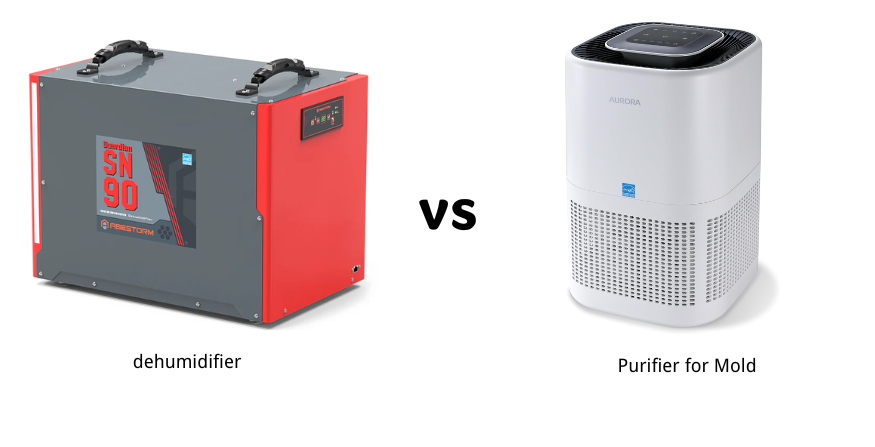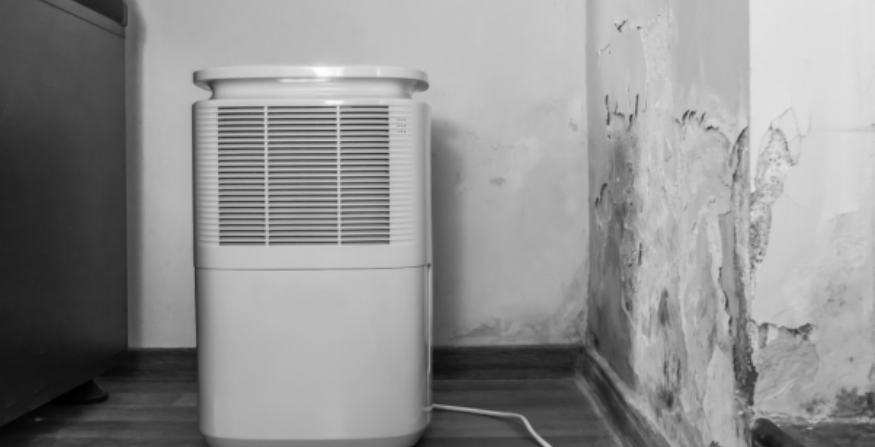Do you want to add a dehumidifier to your home? Dehumidifiers are one of the most effective ways to lower moisture levels indoors, prevent mould, and breathe fresher air. However, as all appliances have strengths and weaknesses, this article is designed to help you decide if you should get a dehumidifier for your home. Here are the pros and cons regarding the dehumidifier, how it works, and when to use it.
How a Dehumidifier Works?
A dehumidifier absorbs moisture from the air, often balancing it in an indoor setting at around 30% to 50% humidity. It succeeds by drawing in humid air and extracting the water content. This is the way that keeps too much moisture that contributes to moulds, mildew, and even structural damage.
For regions with high humidity, dehumidifiers are resourceful in maintaining the environment comfortable and healthy.
It is designed to manage those high, moist-prone places like the Abestorm Basement Dehumidifier. These are an excellent way of keeping out humidity and saving your house from damp-related issues.
Pros of Using a Dehumidifier
Mold and Mildew Prevention
It prevents mould and mildew from growing, and because it prevents mould growth, a mould humidifier makes the development of mould spores seem to get out of control. This is most useful for places like the basement, bathroom, or kitchen, where the humidity quickly rises.
Improved Air Quality
Dehumidifiers not only remove moisture but also reduce dust mites and allergens. Poor humidity can also contribute to allergies and respiratory illnesses. A dehumidifier is actually recommended to provide a healthier and more air-quality environment in a building. For instance, the Abestorm Crawl Space Dehumidifier is designed to improve air quality within tight spaces with high moisture content, thus being very good, especially for allergen-prone homes.
Odor Reduction
High humidity often comes with a musty smell that may not be easy to eliminate, usually attributed to mould and mildew. Dehumidifiers eliminate these smells because they regulate moisture levels, leaving your room smelling fresh. Places in your home have high moisture levels, such as basements, crawl spaces, and bathrooms.
Protection for Furniture and Belongings
Moisture damage can occur to wood, paper, electronics, and other materials. Wood furniture can distort or warp once mildew has gained a foothold on paper products, and electronics are moisture-sensitive. A dehumidifier will reduce the humidity and thus protect your valuables from moisture damage.
Lower Energy Costs in Some Situations
Its use can also reduce energy bills, especially in very humid climates. The more humid an environment is perceived to be, the warmer it feels, and often, people rely more on air conditioning to experience comfort. With a dehumidifier, you will have reduced humidity, making the environment feel cooler and letting you use less air conditioning. For larger areas, Abestorm's Commercial Dehumidifier ensures efficient control of large spaces, enhancing comfort and potentially saving energy.
Cons of Using a Dehumidifier
Energy Consumption
Dehumidifiers consume electrical power, and although they reduce humidity effectively, they cost you energy. Large units or those used for areas with high moisture will consume more energy. This will be a disadvantage for thrifty homeowners since the appliance continuously runs to maintain the desired humidity. This is due to its constant operation to maintain ideal humidity levels.
Noise
Dehumidifiers tend to be noisy, depending on the size of your space. The compressor and fan may cause inconvenience, especially when you keep it in a bedroom, living room, or office. Some are noisier than others, so if you are very particular about background noise, consider this when choosing one for your home. To help, place the dehumidifier in an area not visited often.
Regular Maintenance Required
Dehumidifiers require maintenance to serve efficiently. Most of the units have collection tanks that must be drained. If the unit cannot determine a cause for the blockage, it may stop working until cleared. In addition, filters are one of the necessary parts that need cleaning or replacement now and then. Therefore, These basic maintenance tasks are essential to sustaining the efficient operation of the dehumidifier.
Initial Investment Cost
Although sound-quality dehumidifiers, particularly those designed for bigger coverage or heavy-duty purposes, can be expensive, most families would not spend thousands of dollars on one. The Abestorm Basement Dehumidifier may offer durability and efficiency, but it costs much upfront, especially when discussing high-capacity units.
Air Drying Effects
Air can be dry from dehumidifiers, making living in specific climates or with sensitive skin and respiratory conditions very uncomfortable. For a few people, dry air may lead to dry skin, irritation, and dehydration. Managing the humidity levels and stopping when it is not necessary will ensure that there is always the right amount of moisture without over-drying the air.
When is a Dehumidifier Most Beneficial?
This would be especially useful in always-humid rooms, such as basements and bathrooms. Homes in humidity-driven climates may consider installing dehumidifiers seasonal for use in warmer months when high humidity dominates. This device is very effective for people suffering from allergies or respiratory conditions triggered by high humidity and, in some cases, mould buildup.
It is best to use it with other moisture control measures, such as ventilation and insulation. These together facilitate some balance of humidity without having to rely on a dehumidifier alone.
How to Choose the Right Dehumidifier for Your Space
However, the selection of dehumidifiers will depend on the size of the area and its moisture level. For instance, large areas require a robust model like the Abestorm Commercial Dehumidifier, which can be very efficient at high moisture levels. A small bathroom, closet, or similar room needs a small model. You might also want to look for built-in humidistats, programmable timers, and energy-saving designs when selecting the right dehumidifier.
Abestorm offers various-sized dehumidifiers depending on the size of the rooms, as well as instructions on how to maintain effective humidity control throughout your home.
Tips for Effective Dehumidifier Use
Keep your dehumidifier in a well-ventilated space to get maximum benefits. Do not block the vents or their proximity to walls, as this may reduce their efficiency. Empty the water collected within the tank or, depending on your model's specifications, fit a hose to drain off continuously. Clean or replace filters as indicated by the manufacturer and inspect the humidity level to prevent dehydration of the air.
Suppose you have a dehumidifier in a mould-prone or mildew-prone area. In that case, you can use it with other ways of preventing mould, such as ventilation and repairing leaks, which will achieve maximum results while maintaining a healthy atmosphere.
Conclusion
Simply put, using a dehumidifier has various advantages, such as preventing mould, improving air quality, and securing belongings. Dehumidifiers are very helpful for highly humid regions or individuals sensitive to allergens. On the other hand, it also has negative aspects: high energy consumption, loud operation, and high maintenance. This would let you know whether installing a dehumidifier into your house is what you should do. You can check the best model by reading the options on the Abestorm website for further reference.









Shop For Dehumidifier